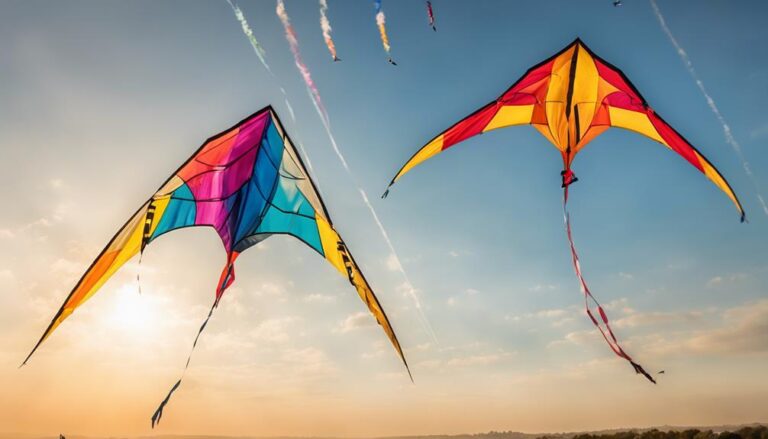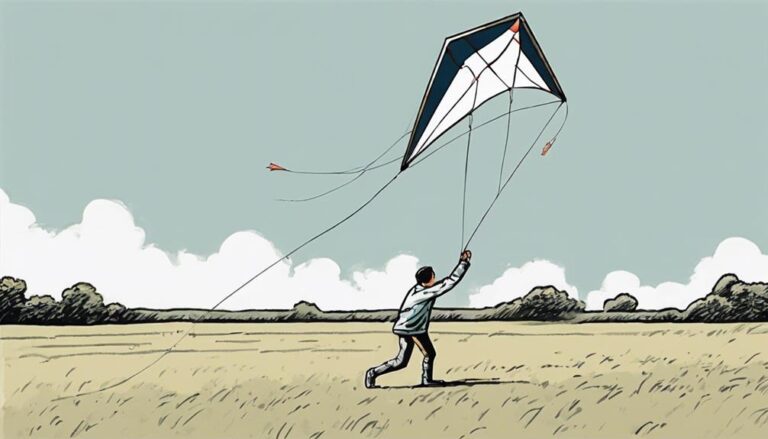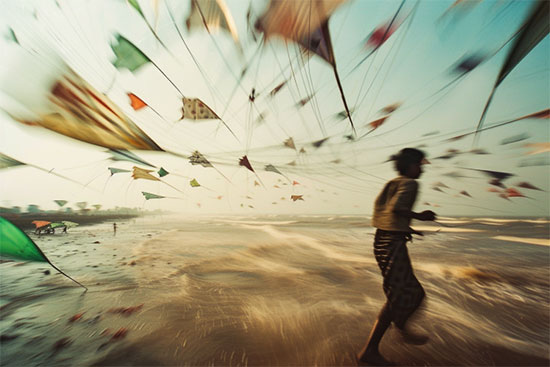Have you ever wondered what it’s like to witness the sky painted with vibrant colors and shapes at a single-line kite festival?
As a cultural enthusiast, you’re probably intrigued by the idea of exploring festivals that not only display artistic creativity but also foster community and cultural exchange.
The Global Guide to Single-Line Kite Festivals offers you a glimpse into the world’s most iconic kite festivals, from the Weifang International Kite Festival in China to the Bali Kite Festival in Indonesia.
But what makes these festivals stand out in the realm of traditional and modern celebrations? Let’s explore the unique blend of history, art, and community spirit that elevates these events beyond mere gatherings.
Contents
History of Single-Line Kites

Tracing back over 2000 years, single-line kites have a storied history that began in China, captivating cultures worldwide with their simplicity and versatility. Marco Polo’s documentation in 1295 highlighted their early global presence, signaling the start of their journey beyond Asia.
By the 18th century, these kites weren’t just for fun; they were vital for scientific research, demonstrating their utility. Monks elevating them in religious ceremonies underscored their profound cultural significance.
Today, single-line kites symbolize creativity, artistry, and community, weaving together the fabric of numerous cultures around the globe. They’re not just playthings but emblems of human ingenuity and a shared skyward gaze, bridging people across continents through the art of kite flying.
Iconic Kite Festivals Globally
Around the globe, single-line kite festivals captivate enthusiasts with their vibrant displays and cultural significance. You’ll find the Weifang International Kite Festival in China, dubbed the World’s Kite Capital, attracting kite lovers from everywhere with its grandeur.
Imagine the skies filled with colorful creations at the International Kite Festival in Ahmedabad, India, held every January, where kites of all shapes and sizes dance in the wind.
Over in Indonesia, the Bali Kite Festival mesmerizes with kites adorned in traditional motifs and Hindu god sketches, showcasing intricate designs.
Down under, the Festival of the Winds in Sydney, Australia, not only fills the sky with kites but also offers kite-making workshops and puppet shows, inviting participants of all ages to join in the fun.
Meanwhile, the Blossom Kite Festival in Washington DC, USA, organized by the World Kite Museum, shines a spotlight on creative kite flyers and enthusiasts, making it a must-visit for anyone passionate about kiting.
Cultural Significance and Traditions
Delving into the world of kite festivals, you’ll discover that these events aren’t just about the spectacle of colors and shapes in the sky, but deeply rooted in cultural traditions and practices that vary from one country to another.
Kite festivals serve as vibrant showcases of diverse cultural traditions, where unique kite designs become more than just objects; they’re emblems of historical events, religious practices, and community values.
Through traditional motifs, colors, and shapes, each kite tells a story, reflecting beliefs and rituals passed down through generations. These festivals promote a global exchange of cultural understanding, allowing people to appreciate the rich tapestry of global traditions through the simple joy of kite flying.
Engaging in these festivals, you’re not just flying kites; you’re weaving yourself into a larger narrative of cultural celebration and appreciation.
Kite-Making and Flying Techniques
Building on the cultural significance of kite festivals, let’s explore how the art of kite making and flying techniques plays a crucial role in these celebrations. When you’re making a kite, choosing materials like bamboo and paper isn’t just about tradition; it’s about crafting a piece that can soar. Traditional kite designs, from diamond-shaped to delta-winged, each hold secrets to mastering the skies.
| Aspect | Why It Matters |
|---|---|
| Material Selection | Ensures durability and flight |
| Design Type | Affects aerodynamics |
| Tail Adjustments | Controls stability |
| Wind Understanding | Aids in launching and flying |
| Knot Tying | Secures components for flight |
Planning Your Kite Festival Journey
Embarking on your kite festival journey requires careful planning, from researching festival dates to exploring accommodation options near celebrated locations like Weifang in China or Ahmedabad in India.
Delve into the world of single-line kite festivals, where vibrant skies and cultural festivities await. Look into travel options that offer the most enriching experience, allowing you to immerse in the cultural significance of each festival.
Whether marveling at the giant kites in Hamamatsu or crafting traditional motifs in Bali, each event offers a unique glimpse into the artistry and heritage of kite flying. Don’t forget to engage in workshops and kite-flying competitions, where you can learn, compete, and celebrate the joyous spirit of these gatherings.
Let your kite festival journey be a memorable adventure filled with color, culture, and camaraderie.
Conclusion
So, you’ve soared through the colorful skies of the world’s most iconic kite festivals, from the vibrant fields of Weifang to the bustling skies above Ahmedabad and the picturesque beaches of Bali.
You’ve witnessed the rich tapestry of culture, tradition, and creativity that single-line kites bring into our lives.
Now, armed with knowledge on kite-making and flying techniques, you’re ready to embark on your kite festival journey. Let your spirit fly high and dive into this unique global celebration.






